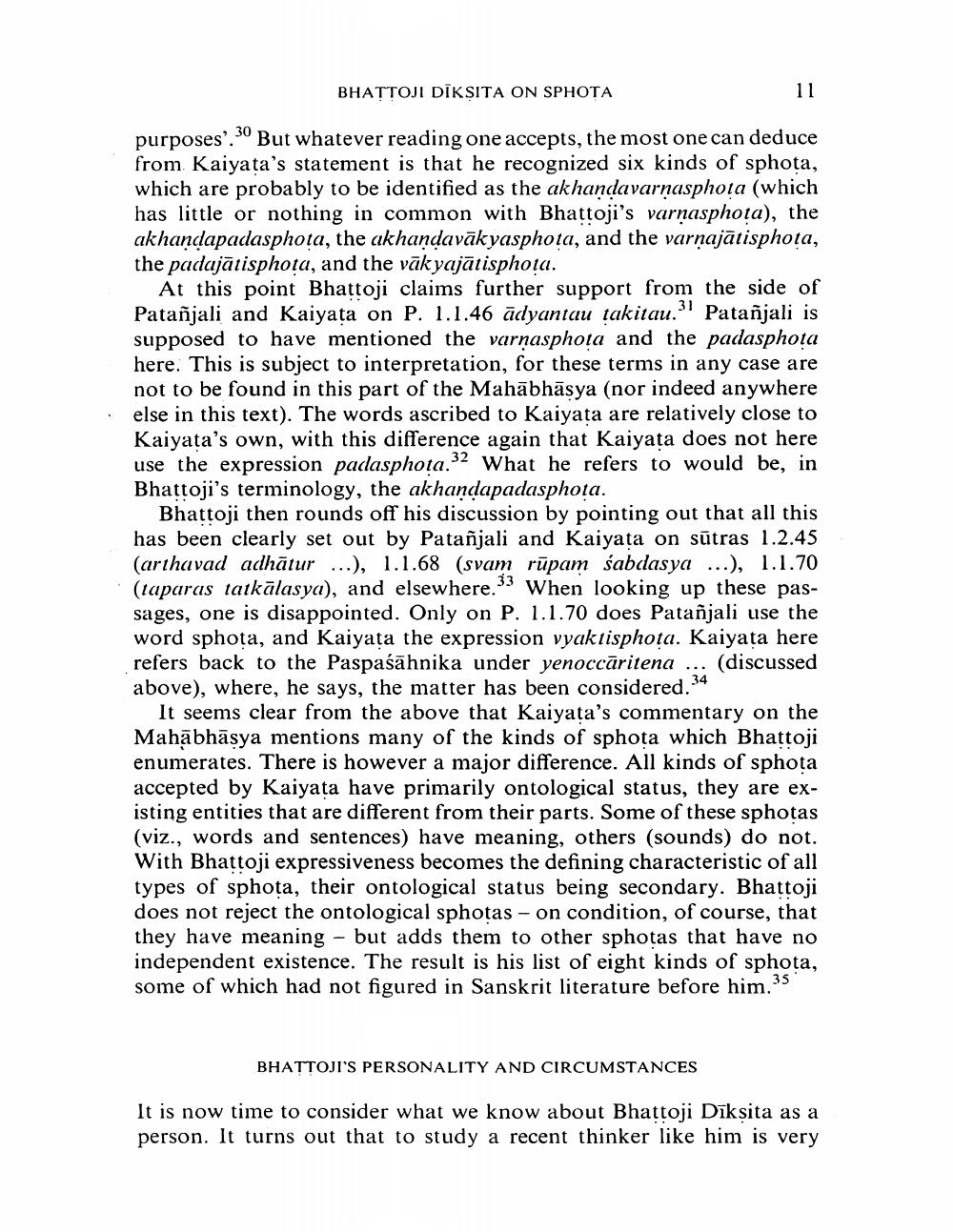Book Title: Bhattoji Diksita On Sphota Author(s): Johannes Bronkhorst Publisher: Johannes Bronkhorst View full book textPage 9
________________ BHATTOJI DIKṢITA ON SPHOTA 11 30 purposes'. But whatever reading one accepts, the most one can deduce from Kaiyaṭa's statement is that he recognized six kinds of sphota, which are probably to be identified as the akhandavarnasphota (which has little or nothing in common with Bhattoji's varṇasphota), the akhandapadasphota, the akhandavākyasphota, and the varṇajatisphota, the padajatisphota, and the vakyajātisphota. At this point Bhattoji claims further support from the side of Patanjali and Kaiyața on P. 1.1.46 adyantau ṭakitau. 31 Patanjali is supposed to have mentioned the varnasphota and the padasphota here. This is subject to interpretation, for these terms in any case are not to be found in this part of the Mahabhāṣya (nor indeed anywhere else in this text). The words ascribed to Kaiyata are relatively close to Kaiyata's own, with this difference again that Kaiyața does not here use the expression padasphota.32 What he refers to would be, in Bhattoji's terminology, the akhandapadasphota. Bhattoji then rounds off his discussion by pointing out that all this has been clearly set out by Patanjali and Kaiyața on sutras 1.2.45 (arthavad adhātur ...), 1.1.68 (svam rūpam sabdasya ...), 1.1.70 (taparas tatkalasya), and elsewhere.33 When looking up these passages, one is disappointed. Only on P. 1.1.70 does Patanjali use the word sphota, and Kaiyața the expression vyaktisphoṭa. Kaiyaṭa here refers back to the Paspaśāhnika under yenoccāritena (discussed above), where, he says, the matter has been considered. 34 It seems clear from the above that Kaiyata's commentary on the Mahābhāṣya mentions many of the kinds of sphota which Bhattoji enumerates. There is however a major difference. All kinds of sphota accepted by Kaiyața have primarily ontological status, they are existing entities that are different from their parts. Some of these sphotas (viz., words and sentences) have meaning, others (sounds) do not. With Bhattoji expressiveness becomes the defining characteristic of all types of sphota, their ontological status being secondary. Bhattoji does not reject the ontological sphotas - on condition, of course, that they have meaning - but adds them to other sphotas that have no independent existence. The result is his list of eight kinds of sphota, some of which had not figured in Sanskrit literature before him.3 35 BHATTOJI'S PERSONALITY AND CIRCUMSTANCES It is now time to consider what we know about Bhaṭṭoji Dīkṣita as a person. It turns out that to study a recent thinker like him is veryPage Navigation
1 ... 7 8 9 10 11 12 13 14 15 16 17 18 19 20 21 22 23 24 25 26 27 28 29 30 31 32 33 34 35 36 37 38 39
